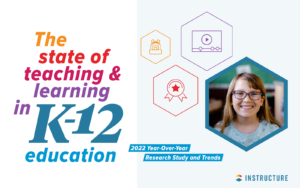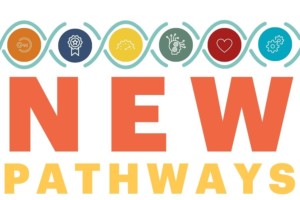How Digital Learning is Boosting Achievement

It’s the early innings of the digital learning revolution but the evidence is piling up. While it would be nice to have a couple large scale long term definitive randomized controlled trials, but there are hundreds of pieces of direction evidence from EdTech components and promising school models. Following is a summary of promising schools and networks, studies of online and blended learning, studies of math components, studies of literacy components, and evidence of improved productivity.
1. Blended schools/networks achieve high performance:
-
Mooresville, NC has seen an improvement of 20 percentage points—from 68 percent to 88 percent—in the portion of its students who scored “proficient” on all core-subject state exams, in the subjects of reading, math, and science in the four years since its conversion to a 1-to-1 laptop program.
-
Rocketship Education elementary schools are pioneers in blended learning and in the top 5% of schools service low-income students in California.
-
Carpe Diem-Yuma leads the state in student academic growth and last year achieved an average 92% proficiency and 40% advanced performance on Arizona’s math and reading assessments.
-
KIPP Empower: In the first year of the blended learning pilot, 95% of kindergartners scored at or above national in math and 96% in reading, while only 9% arrived kindergarten-ready. Based on the results, KIPP LA expanded use of technology to all 9 schools.
-
AdvancePath: 90% enrolling in the blended learning dropout prevention network are likely to earn their high school diploma.
-
Robert A. Taft Information Technology High School, Cincinnati, was converted to a technology-focused school and saw graduation rates skyrocket from about 21% to more than 95%.
-
Combining school improvement with blended learning Partnership for LA Schools was the most improved school system in the state in the 2012-13 year with test score gains outpacing all other mid to large schools districts.
-
The Education Achievement Authority operates 12 innovative blended learning schools in Detroit. Last year, the K-8 schools exhibited among the most rapidly academic growth in the city with the majority of high schools showing two or more years of growth.
-
Aspire Public School’s second blended learning school, Aspire Titan Academy, combines shared inquiry with DreamBox and i-Ready. Results have been promising enough that the rest of the network will adopt blended learning.
-
Ten of the 22 high performing Alliance for College Ready Public Schools in Los Angeles implemented a blended learning model with promising results.
-
Summit Public Schools has very high graduation and four year college attendance rates and an innovative blended model.
-
IDEA Public Schools is a high performing network of 30 schools serving 15,000 students serving low income communities in south Texas. Blended learning strategies are boosting elementary results.
-
Hybrid learning is showing results and achieving scale in Pennsylvania.
The best school networks in the country are rapidly adopting blended strategies–a signal about the opportunity set. School profiles provide a useful summary of models and tools:
-
Blended learning case studies (2012) from the Dell Foundation profile Alliance, FirstLine, KIPP, Rocketship, and Summit. FSG profiled the same networks.
-
Christensen Institute profiles schools in Blended Learning Universe.
-
Winners of Next Generation Learning Challenges grants are profiled here.
2. Studies of online and blended learning show efficacy:
-
The U.S. Department of Education’s Evaluation of Evidence-Based Practices in Online Learning: A Meta-Analysis and Review of Online Learning Studies of more than 40 studies found that (mostly higher ed) “students who took all or part of their classes online performed better, on average, than those taking the same course through traditional face-to-face instruction.”
-
An IES study of online 8th grade Algebra should positive results.
-
iNACOL’s Summary of Research on the Effectiveness of K-12 Online Learning provides a full review of literature as well as thoughts on the future of online learning research.
-
Project RED data found that the use of technology-based interventions for English-language learners, struggling readers, and students in special education were the top predictors of improved high-stakes-test scores, dropout-rate reduction, and course completion.
-
A comprehensive evaluation concluded that Florida Virtual School students outperformed their counterparts in Florida’s traditional middle and high schools on such measures as grades, Advanced Placement scores and FCAT scores.
-
A recent Summative Meta-Analysis and Trend Examination found that online learning (mostly higher ed) produced better results than face-to-face courses—and the gap is widening as technology improves. See Q&A: Mickey Shachar On Traditional vs. Distance Learning.
-
Study Finds Arkansas Virtual Academy Students Outperform Public School Students.
-
A study by the National Survey of Student Engagement reported that the online-learning experience yielded deeper use of “higher-order thinking, integrative learning, and reflective learning.”
-
FLVS Part Time Students Dramatically Outperform State Averages on all four state-created End-of-Course (EOC) exams. In Algebra, 84% of FLVS students passed compared to 64% of students statewide.
-
An SRI study showed “moderate to strong effect in favor of digital games in terms of broad cognitive competencies.”
3. Technology-enabled math products have boosted achievement:
-
ST Math, a visual game-based approach, has demonstrated results at scale in more than 2050 elementary schools nationwide. For more than 10 years, ST Math was used predominantly in a lab rotation model. With the 2012 introduction of an iPad app, use in class rotation models became common. In April 2013, WestEd released an Evaluation of ST Math in the Los Angeles Unified School District. In October 2013 Change the Equation recognized ST Math as a program “that consistently yield positive outcomes.” The Business Roundtable also recognized ST Math “for their outstanding work to improve U.S. student achievement.”
-
Dreambox used at Rocketship has been found highly effective.
-
Go Know boosted 5th grade math proficiency by 20 points in mobile learning trial in Katy, Texas.
-
A RAND study of Carnegie Learning’s Cognitive Tutor Algebra I involving 17,000 students showed positive results from blended delivery.
-
Reasoning Mind helped 100% of 2nd graders in Compton to score at the proficient or advanced level.
-
Interactive Learning Online at Public Universities: Evidence from Randomized Trials showed that a blended statistics class provided a rapid and economical pathways to mastery.
-
A review of the first year results of Teach to One from New Classrooms in 8 schools showed that low income student made 20% more gains than the national average.
4. Technology-enable literacy products have boosted achievement:
-
A Compendium of Read 180 Research summarizes correlational and descriptive studies as well as randomized or quasi-experimental studies, and reports on reading gains for the general student population as well as for specific demographic groups of students. Read 180 is a station rotation model incorporating small group instruction, modeled and independent reading, and adaptive instructional software.
-
A study including more than 250,000 students using Achieve3000 nearly doubled their literacy growth.
-
WriteToLearn has been shown to improve writing skills and reading comprehension in hundreds of classroom studies.
-
Computer-assisted language learning (CALL) is beneficial to English language learners according to a UC Irvine study.
5. Digital learning has the potential to boost learning and operating productivity:
-
In Digital Learning Imperative, the Alliance for Excellent Education first made the case that digital learning was the only solution to the achievement gap, the fiscal gap, and the effective teacher gap.
-
A recent U.S. Department of Education Study outlined nine ways that online learning can boost productivity.
-
The Florida Tax Watch evaluation of Florida Virtual School found, in addition to student achievement gains, that FLVS is “a bargain for Florida taxpayers. Largely because it has no expenses related to transportation or construction and maintenance of physical facilities, FLVS is able to offer computer-delivered instruction at a lower per-student cost than traditional schools.”
-
OpportunityCulture from Public Impact illustrates how technology extends the reach of great teachers.
-
Parthenon Group estimates the potential to save about 10% using blended learning strategies.
Blended learning tools, models and strategies continue to improve and evidence continues to mount. While it’s early in the revolution, it’s clear that the opportunity set is improving rapidly. We’d welcome your additions to this compilation.
Also see:
DreamBox, FLVS, EDUCAUSE, Pearson, Scholastic, MIND Research are Getting Smart advocacy partners.






Sandra Turner
I want to add our small program to the list. We offer distance literacy training to First Nations people in urban, remote and rural communities in Ontario. Without our program, learners would not be moving on to employment, achieving their high school diploma, or going on to community college. There is no telling what the future holds for our learners. Thank you for this article.
Hatch Early Learning (@HatchEarlyChild)
Thank you for inquiring about Hatch Early Learning. We develop educational technology learning systems for early learners (mainly pre-k through grade 1). Our focus is on developing interactive learning games based on the skills and content areas research shows young children need competency on for school success; with learning systems on all major platforms including IWBS, touchscreen computers, tablets, and multi-touch tables. We are also committed to outcomes-based research and have conducted to date two efficacy studies both of which found children using the systems made statistically significant gains on externally valid and reliable measures in language/literacy and math (http://www.hatchearlychildhood.com/layout-images/documents/Resources/iSSEfficacyPreview.pdf and http://www.eric.ed.gov/PDFS/ED528703.pdf )
Lilla Dale Mcmanis, PHD | Research Director
Hatch Early Learning
HatchEarlyLearning.com
Carri Schneider
Thanks Sandra and Lilla for sharing information about your programs. We are always on the lookout for innovative ways to meet student needs and improve results!
Mark Windschitl
In responding to claims about technology and learning, it is always important to read the original research and to understand what it is really saying. For example, with regard to the U.S. Department of Education’s Evaluation of Evidence-Based Practices in Online Learning: A Meta-Analysis and Review of Online Learning Studies. The latter half of the abstract is composed entirely of cautions/caveats. It states for example: "The difference between student outcomes for online and face-to-face classes—measured as the difference between treatment and control means, divided by the pooled standard deviation—was larger in those studies contrasting conditions that blended elements of online and face-to-face instruction with conditions taught entirely face-to-face. Analysts noted that these blended conditions often included additional learning time and instructional elements not received by students in control conditions. This finding suggests that the positive effects associated with blended learning should not be attributed to the media, per se. An unexpected finding was the small number of rigorous published studies contrasting online and face-to-face learning conditions for K–12 students. In light of this small corpus, caution is required in generalizing to the K–12 population because the results are derived for the most part from studies in other settings (e.g., medical training, higher education)." The critical reader can see that the conclusions are far from straightforward.
Replies
Tom Vander Ark
When reading research it's important to remembers it's all rear view mirror. The ED study is all from the last decade. The ability to personalize learning has dramatically improved in the last 24 months and will be much better 24 months from now.
Tom Vander Ark
See online & blended research summary from CMU
http://press.etc.cmu.edu/content/handbook-research-k-12-online-and-blended-learning-0
Tom Vander Ark
See Blended Learning Research Clearinghouse from Learning Accelerator
http://learningaccelerator.org/media/12132951/BL%20Research%20Clearinghouse%201.0-050715%20(1).pdf